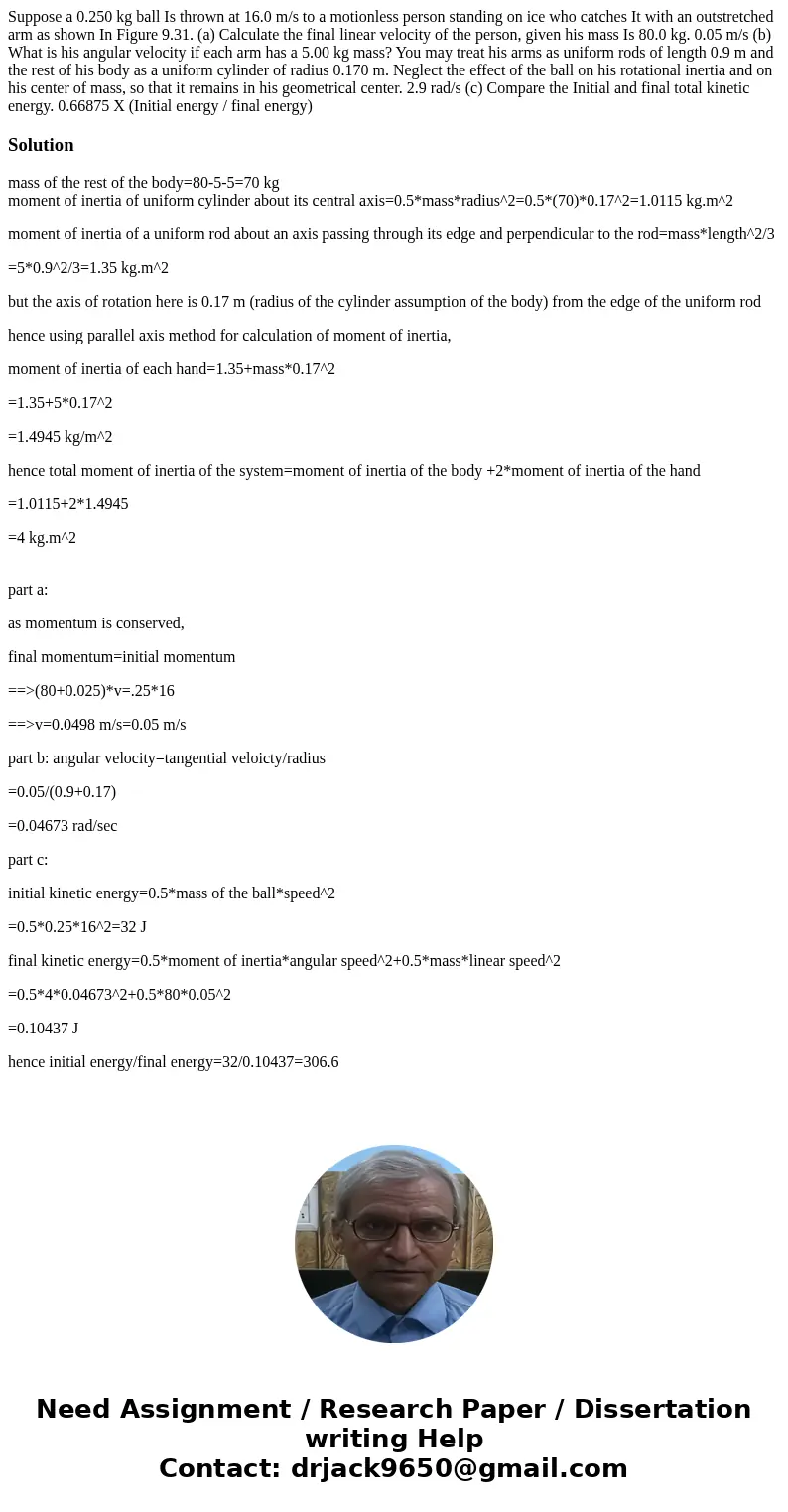Suppose a 0250 kg ball Is thrown at 160 ms to a motionless p
Solution
mass of the rest of the body=80-5-5=70 kg
moment of inertia of uniform cylinder about its central axis=0.5*mass*radius^2=0.5*(70)*0.17^2=1.0115 kg.m^2
moment of inertia of a uniform rod about an axis passing through its edge and perpendicular to the rod=mass*length^2/3
=5*0.9^2/3=1.35 kg.m^2
but the axis of rotation here is 0.17 m (radius of the cylinder assumption of the body) from the edge of the uniform rod
hence using parallel axis method for calculation of moment of inertia,
moment of inertia of each hand=1.35+mass*0.17^2
=1.35+5*0.17^2
=1.4945 kg/m^2
hence total moment of inertia of the system=moment of inertia of the body +2*moment of inertia of the hand
=1.0115+2*1.4945
=4 kg.m^2
part a:
as momentum is conserved,
final momentum=initial momentum
==>(80+0.025)*v=.25*16
==>v=0.0498 m/s=0.05 m/s
part b: angular velocity=tangential veloicty/radius
=0.05/(0.9+0.17)
=0.04673 rad/sec
part c:
initial kinetic energy=0.5*mass of the ball*speed^2
=0.5*0.25*16^2=32 J
final kinetic energy=0.5*moment of inertia*angular speed^2+0.5*mass*linear speed^2
=0.5*4*0.04673^2+0.5*80*0.05^2
=0.10437 J
hence initial energy/final energy=32/0.10437=306.6

 Homework Sourse
Homework Sourse